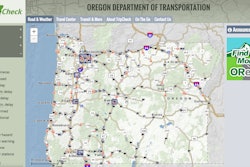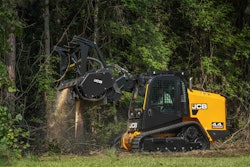 Thomas Schumacher (left) and Erik Thostenson. Photo: Evan Krape, University of Delaware.
Thomas Schumacher (left) and Erik Thostenson. Photo: Evan Krape, University of Delaware.Before a bridge collapses, there can be subtle warning signs, but they can be hard to detect. A new study in the Journal of Nondestructive Evaluation focuses on a carbon nanotube sensor that may be able to identify bridge issues before a collapse occurs.
According to a press release from the University of Delaware, several years ago, Erik Thostenson and Thomas Schumacher, faculty members at UD’s Center for Composite Materials, began to explore the use of carbon nanotube composites as a kind of “smart skin” for structures.
The sensor relies on Electrical Impedance Tomography (EIT), a cutting-edge algorithm that can produce a precise map of changes in the nanotubes to pinpoint minor damage before it is detectable by conventional means. The new approach uses surface electrode measurements to create an image of the conductivity of a material or structure.
“While the feasibility of employing carbon-nanotube-based composites as sensors has been validated, the typical approach is to use a series of one-dimensional measurements collected from a two-dimensional sensing area,” Thostenson said in the press release. “The problem is that this confines the possible damage locations to the grid points of the measurements. EIT, on the other hand, is a true 2D algorithm.”
According to the release, the nanotubes are electromechanically sensitive by nature, so even slight damage to the sensor directly affects its conductivity, and the EIT algorithm can measure even the slightest changes in the conductivity of the nanotubes and turn those signals into a map of damage. When the nanotech sensor was tested, researchers found that the EIT algorithm could detect damage on computer models better than visual inspection and inspections performed with infrared cameras.
“Although we did encounter some issues with the size of cracks being overestimated and their shapes not being well represented, overall, our EIT methodology was able to detect the initiation of damage well before it was visible with infrared thermography,” Schumacher said in the release, adding that carbon nanotubes are inexpensive technology that are easy to scale up, and that they could ultimately line bridges and other infrastructure to act as a sort of early warning system.
“We are in the process of making improvements to the EIT algorithm to increase its accuracy. After that, we plan to demonstrate it in the laboratory, with an aim toward scaling it up for future monitoring of real structures.”












